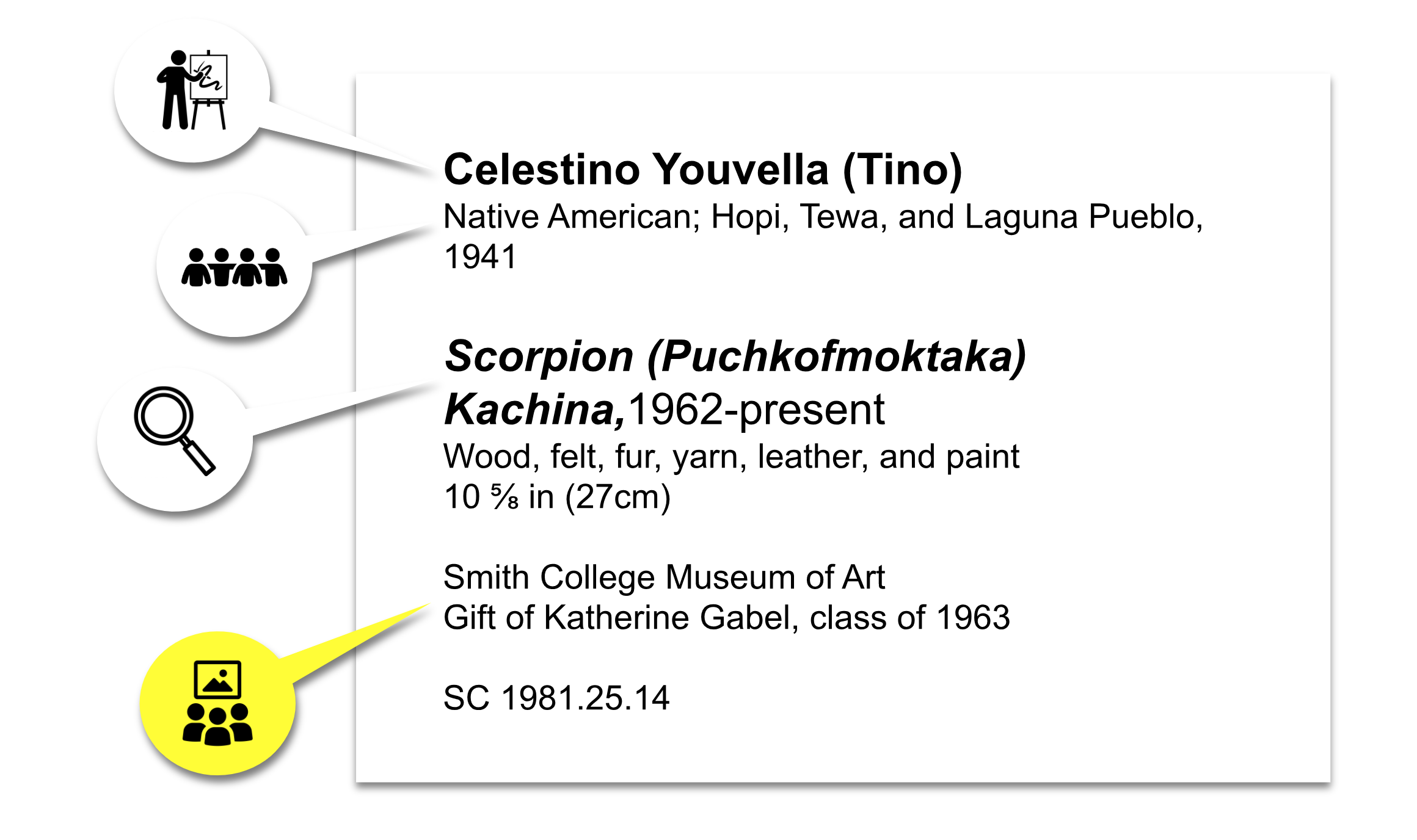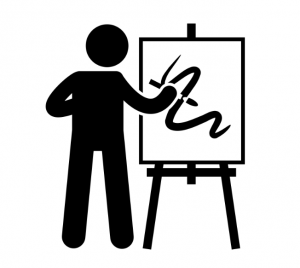Up until the middle of the nineteenth century, tithu were solely created by men and given to relatives during ceremonies. Though they were originally meant to be gifted within the community, creators began to sell tithu to outsiders in the 1850’s.
1857 is the first recorded date of the Euro-American collection of a Hopi tihu. Though, they were not widely popular until they were first publicly exhibited by the Fred Harvey Company in 1904. The Museum of Northern Arizona began hosting annual Hopi Craftsman Exhibits beginning in 1930, thus commencing the increasing demand for their collection and reproduction.1
As “Kachina dolls”, like Youvella’s Scorpion Kachina, have found their way into fine art museums, many issues have developed. For example, questions of authenticity, their status as “tourist objects” and “crafts” in a fine art space. Moreover, Katsinam representations are also used for spiritual purposes. Does Scorpion Kachina qualify to be repatriated under the Native American Graves Protection and Repatriation Act (NAGPRA)?
Gift of Katherine Gabel, class of 1963
A collection of about 23 tithu were gifted to Smith College Museum of Art from Katherine Gabel’s personal collection

Katherine Gabel, Smith College alumna, served as dean of the School for Social Work from 1976 to 1985.
“After graduating from Smith, Gabel earned an M.S.W., a Ph.D. in social science, and a law degree. She was then appointed to the newly established position of Superintendent of the Arizona Girl’s School, an institution for juvenile detention and rehabilitation, which within three years became Adobe Mountain School, a coeducational facility. Her work at the school earned her the Smith College Medal in 1976. When she returned to campus to receive the award, President Jill Ker Conway asked her to help choose the new dean for the School for Social Work, and then appointed Gabel herself.” 2
It is likely that she collected most of the tithu during her time as Superintendent at the Arizona Girl’s School.

Click an icon above to fill in the label
- Zena Pearlstone. Katsina: Commodified and Appropriated Images of Hopi Supernaturals. 2nd ed. UCLA: Fowler Museum of Cultural History, 2002. Print. 12.
- https://ssw.smith.edu/about-ssw/scssw-alumni-network/awards/day-garrett/gabel





